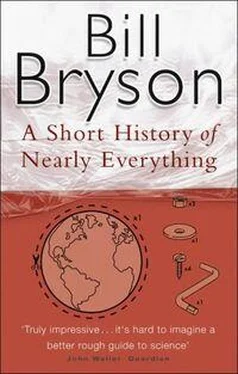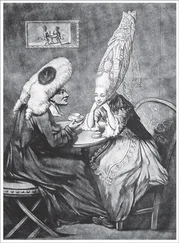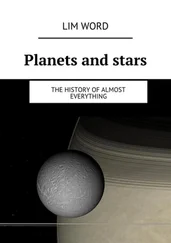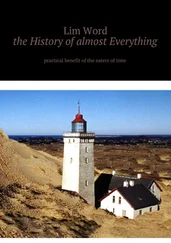Over the next decade, Hubble tackled two of the most fundamental questions of the universe: how old is it, and how big? To answer both it is necessary to know two things-how far away certain galaxies are and how fast they are flying away from us (what is known as their recessional velocity). The red shift gives the speed at which galaxies are retiring, but doesn’t tell us how far away they are to begin with. For that you need what are known as “standard candles”-stars whose brightness can be reliably calculated and used as benchmarks to measure the brightness (and hence relative distance) of other stars.
Hubble’s luck was to come along soon after an ingenious woman named Henrietta Swan Leavitt had figured out a way to do so. Leavitt worked at the Harvard College Observatory as a computer, as they were known. Computers spent their lives studying photographic plates of stars and making computations-hence the name. It was little more than drudgery by another name, but it was as close as women could get to real astronomy at Harvard-or indeed pretty much anywhere-in those days. The system, however unfair, did have certain unexpected benefits: it meant that half the finest minds available were directed to work that would otherwise have attracted little reflective attention, and it ensured that women ended up with an appreciation of the fine structure of the cosmos that often eluded their male counterparts.
One Harvard computer, Annie Jump Cannon, used her repetitive acquaintance with the stars to devise a system of stellar classifications so practical that it is still in use today. Leavitt’s contribution was even more profound. She noticed that a type of star known as a Cepheid variable (after the constellation Cepheus, where it first was identified) pulsated with a regular rhythm-a kind of stellar heartbeat. Cepheids are quite rare, but at least one of them is well known to most of us. Polaris, the Pole Star, is a Cepheid.
We now know that Cepheids throb as they do because they are elderly stars that have moved past their “main sequence phase,” in the parlance of astronomers, and become red giants. The chemistry of red giants is a little weighty for our purposes here (it requires an appreciation for the properties of singly ionized helium atoms, among quite a lot else), but put simply it means that they burn their remaining fuel in a way that produces a very rhythmic, very reliable brightening and dimming. Leavitt’s genius was to realize that by comparing the relative magnitudes of Cepheids at different points in the sky you could work out where they were in relation to each other. They could be used as “standard candles”-a term she coined and still in universal use. The method provided only relative distances, not absolute distances, but even so it was the first time that anyone had come up with a usable way to measure the large-scale universe.
(Just to put these insights into perspective, it is perhaps worth noting that at the time Leavitt and Cannon were inferring fundamental properties of the cosmos from dim smudges on photographic plates, the Harvard astronomer William H. Pickering, who could of course peer into a first-class telescope as often as he wanted, was developing his seminal theory that dark patches on the Moon were caused by swarms of seasonally migrating insects.)
Combining Leavitt’s cosmic yardstick with Vesto Slipher’s handy red shifts, Edwin Hubble now began to measure selected points in space with a fresh eye. In 1923 he showed that a puff of distant gossamer in the Andromeda constellation known as M31 wasn’t a gas cloud at all but a blaze of stars, a galaxy in its own right, a hundred thousand light-years across and at least nine hundred thousand light-years away. The universe was vaster-vastly vaster-than anyone had ever supposed. In 1924 he produced a landmark paper, “Cepheids in Spiral Nebulae” ( nebulae, from the Latin for “clouds,” was his word for galaxies), showing that the universe consisted not just of the Milky Way but of lots of independent galaxies-“island universes”-many of them bigger than the Milky Way and much more distant.
This finding alone would have ensured Hubble’s reputation, but he now turned to the question of working out just how much vaster the universe was, and made an even more striking discovery. Hubble began to measure the spectra of distant galaxies-the business that Slipher had begun in Arizona. Using Mount Wilson’s new hundred-inch Hooker telescope and some clever inferences, he worked out that all the galaxies in the sky (except for our own local cluster) are moving away from us. Moreover, their speed and distance were neatly proportional: the further away the galaxy, the faster it was moving.
This was truly startling. The universe was expanding, swiftly and evenly in all directions. It didn’t take a huge amount of imagination to read backwards from this and realize that it must therefore have started from some central point. Far from being the stable, fixed, eternal void that everyone had always assumed, this was a universe that had a beginning. It might therefore also have an end.
The wonder, as Stephen Hawking has noted, is that no one had hit on the idea of the expanding universe before. A static universe, as should have been obvious to Newton and every thinking astronomer since, would collapse in upon itself. There was also the problem that if stars had been burning indefinitely in a static universe they’d have made the whole intolerably hot-certainly much too hot for the likes of us. An expanding universe resolved much of this at a stroke.
Hubble was a much better observer than a thinker and didn’t immediately appreciate the full implications of what he had found. Partly this was because he was woefully ignorant of Einstein’s General Theory of Relativity. This was quite remarkable because, for one thing, Einstein and his theory were world famous by now. Moreover, in 1929 Albert Michelson-now in his twilight years but still one of the world’s most alert and esteemed scientists-accepted a position at Mount Wilson to measure the velocity of light with his trusty interferometer, and must surely have at least mentioned to him the applicability of Einstein’s theory to his own findings.
At all events, Hubble failed to make theoretical hay when the chance was there. Instead, it was left to a Belgian priest-scholar (with a Ph.D. from MIT) named Georges Lemaître to bring together the two strands in his own “fireworks theory,” which suggested that the universe began as a geometrical point, a “primeval atom,” which burst into glory and had been moving apart ever since. It was an idea that very neatly anticipated the modern conception of the Big Bang but was so far ahead of its time that Lemaître seldom gets more than the sentence or two that we have given him here. The world would need additional decades, and the inadvertent discovery of cosmic background radiation by Penzias and Wilson at their hissing antenna in New Jersey, before the Big Bang would begin to move from interesting idea to established theory.
Neither Hubble nor Einstein would be much of a part of that big story. Though no one would have guessed it at the time, both men had done about as much as they were ever going to do.
In 1936 Hubble produced a popular book called The Realm of the Nebulae , which explained in flattering style his own considerable achievements. Here at last he showed that he had acquainted himself with Einstein’s theory-up to a point anyway: he gave it four pages out of about two hundred.
Hubble died of a heart attack in 1953. One last small oddity awaited him. For reasons cloaked in mystery, his wife declined to have a funeral and never revealed what she did with his body. Half a century later the whereabouts of the century’s greatest astronomer remain unknown. For a memorial you must look to the sky and the Hubble Space Telescope, launched in 1990 and named in his honor.
Читать дальше












